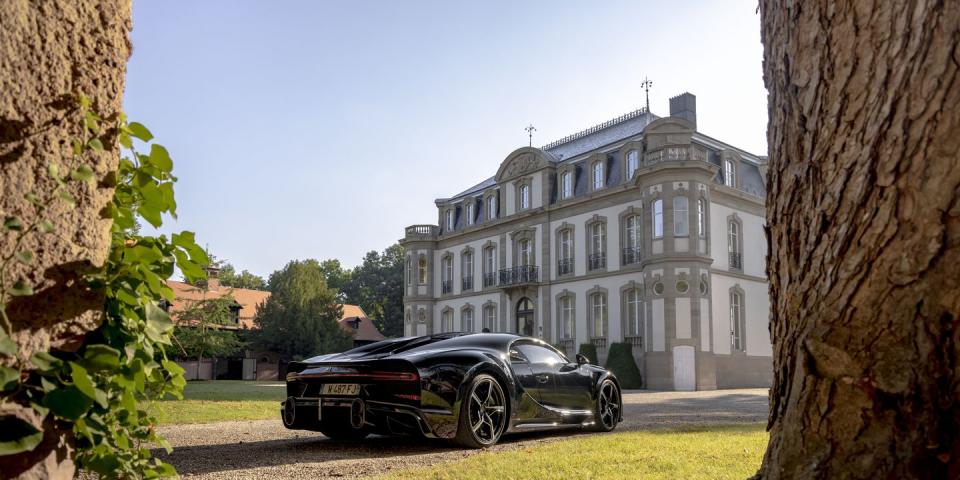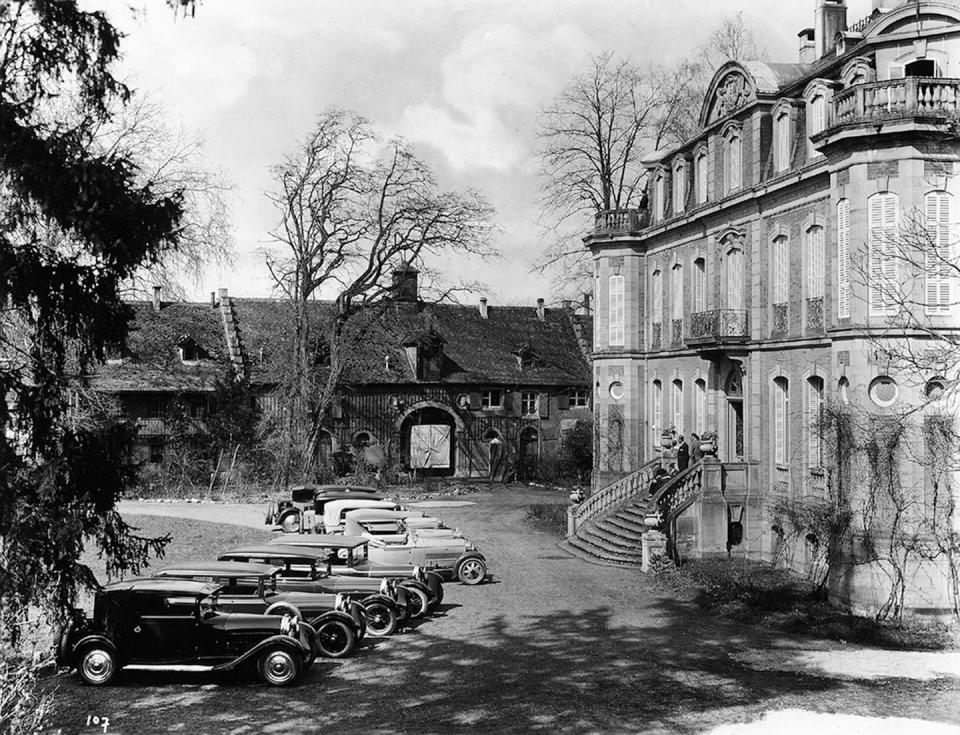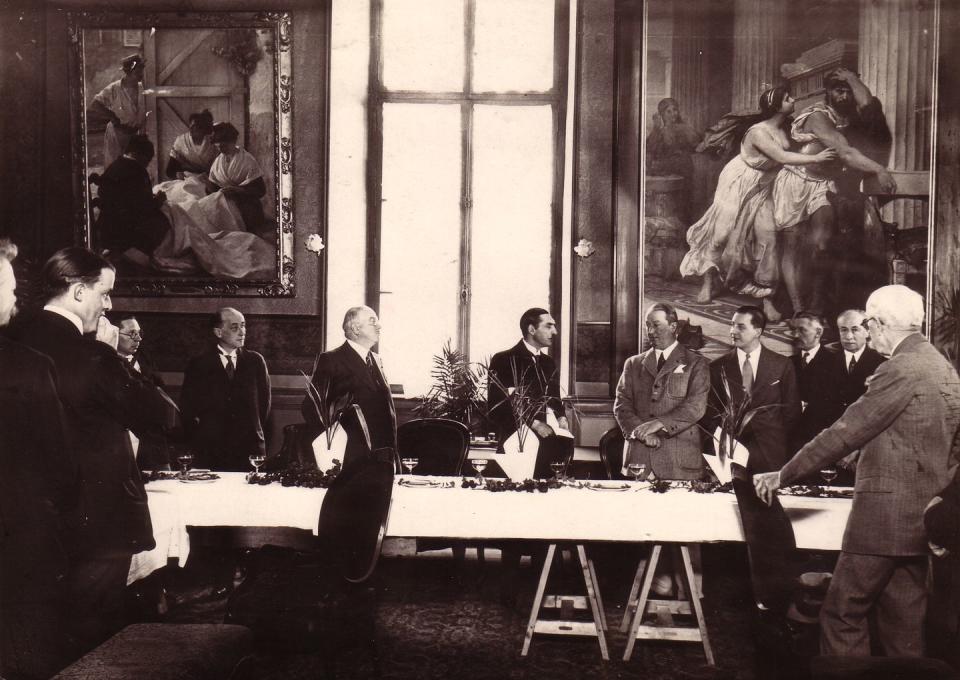House of Ettore: The Bugatti Château Is Where the Brand's Past Meets Its Present

Back in 1909, in the contested Alsatian French/German border town of Molsheim, the erudite artisans of the Milanese Bugatti family—son Ettore, backed by father Carlo—acquired a factory to begin producing their namesake automobiles. Engineered and designed to be the fastest and the loveliest cars in the world, intended to compete with Bentleys on the track and Rolls-Royces at the opera, Bugattis earned a name that soon became synonymous with speed, beauty, and exclusivity.

This position was cultivated through the careful and early use of advertising, marketing, and promotional film materials, touting the cars’ careful construction and racing success. To further impress the aristocrats and nouveau riches in his demographic crosshairs, in 1928, company founder Ettore Bugatti purchased a mid-19th century Château adjoining his factory. Here, he entertained investors, hosted dinners and events, and met with clients to spec forthcoming cars and hand over their finished vehicles. He even fielded solicitous visits from prospective buyers.
"A story I’ve heard is that a potential customer once arrived in a taxi because his car would not start—it was cold out and the customer did not have a heated garage," said Luigi Galli, the brand’s heritage and certification specialist, who toured us around the Château and its grounds, owned again by Bugatti since the marque’s 1998 revival as part of the VW Group. “And Ettore Bugatti would not sell the man a car, and said something like, 'If you do not have a heated garage, perhaps you cannot afford a Bugatti.'"
The Château serves much the same functions now. Brand club meetings and anniversary celebrations are held on the grounds. Customers meet with designers to configure, reconfigure, and take delivery of their seven- or eight-figure hypercars. And private luncheons and dinners are served. However, the majority of the fiscal vetting takes place elsewhere. "We meet with customers here who are in touch with our dealers," Galli said. "Our dealers must make sure the customer is ready."

Because it was (and remains) a long trip to Molsheim, back in the day, visitors often spent the night in one of the Château’s lavishly decorated rooms. (Members of the Bugatti family also designed and produced opulent furniture.) But now, things have changed. The Château lacks accommodations. The first floor features a single ballroom-sized space containing historical displays and exhibits. And the upstairs levels are similarly open, occupied by the brand’s sales, statistical analysis, and heritage teams.
During our exclusive visit to the grounds, we spent the night on the front lawn in a geodesic plastic glamping tent. It was furnished with branded objects from the Bugatti Home Collection—including cashmere blankets, weighty leather chairs, and scented candles—as well as items decidedly not from the Bugatti Home Collection, such as a pair of portable air conditioners defeating the stifling European heatwave, and a bottle of French whiskey we nicked from the greenhouse after a game of billiards on a $300,000 Bugatti-branded pool table.
This temporary setup reflects the fact that contemporary Bugatti clients do not desire, or require, local overnight accommodations. “Our customers are busy, so they either fly their jet into the Strasbourg airport or land their helicopter on a pad we have on-site—it’s very noisy, but you get used to it,” Galli said. They usually arrive around 9:00 am, are chauffeured to the premises, enjoy a test drive, meet with the designers in the configuration rooms to spec their cars, and then are served lunch in one of the renovated historical outbuildings. After four or five hours, they depart. (Because we know you want to know, Porsche Panamera sedans were previously used as airport shuttles, but have recently been supplanted by Cayenne SUVs. “They have more space,” Galli said. Still, some customers from Dubai prefer to bring in their own vans.)
When partaking of a test drive—as we did, blasting around Molsheim in a black-over-caramel Chiron Super Sport—clients are paired with a professional driver. Riding right seat during our dalliance was Andy Wallace, a Le Mans, Daytona, and Sebring-winning racer, and the man who famously piloted a Chiron to over 300 mph on a closed circuit. Though the folks who buy Bugattis tend to own dozens of other extreme vehicles, they may still be unaccustomed to driving a car with the Chiron’s outrageous power, and capacity for placing that power on the roadway.
“They get out on these roads, and they drive too fast,” Wallace said, laughing, as we plowed through the vineyards, roundabouts, and plane tree-lined allees that dot the local countryside. “And then, if I take them on a track, they drive too slow.” We can relate. The Chiron’s capabilities—which make a 777 at takeoff feel comparatively sluggish—confound automotive logic.

 Yahoo Autos
Yahoo Autos 